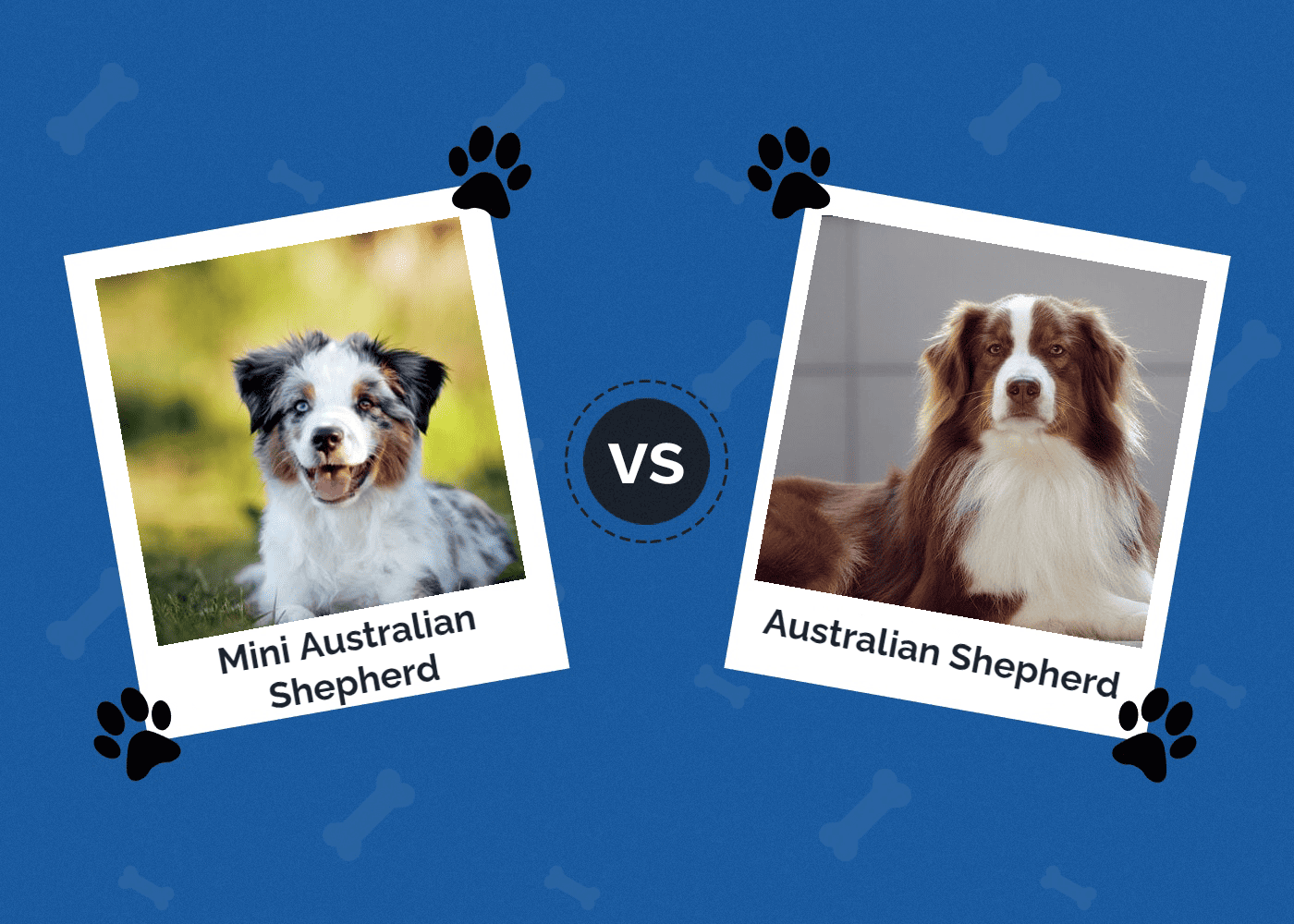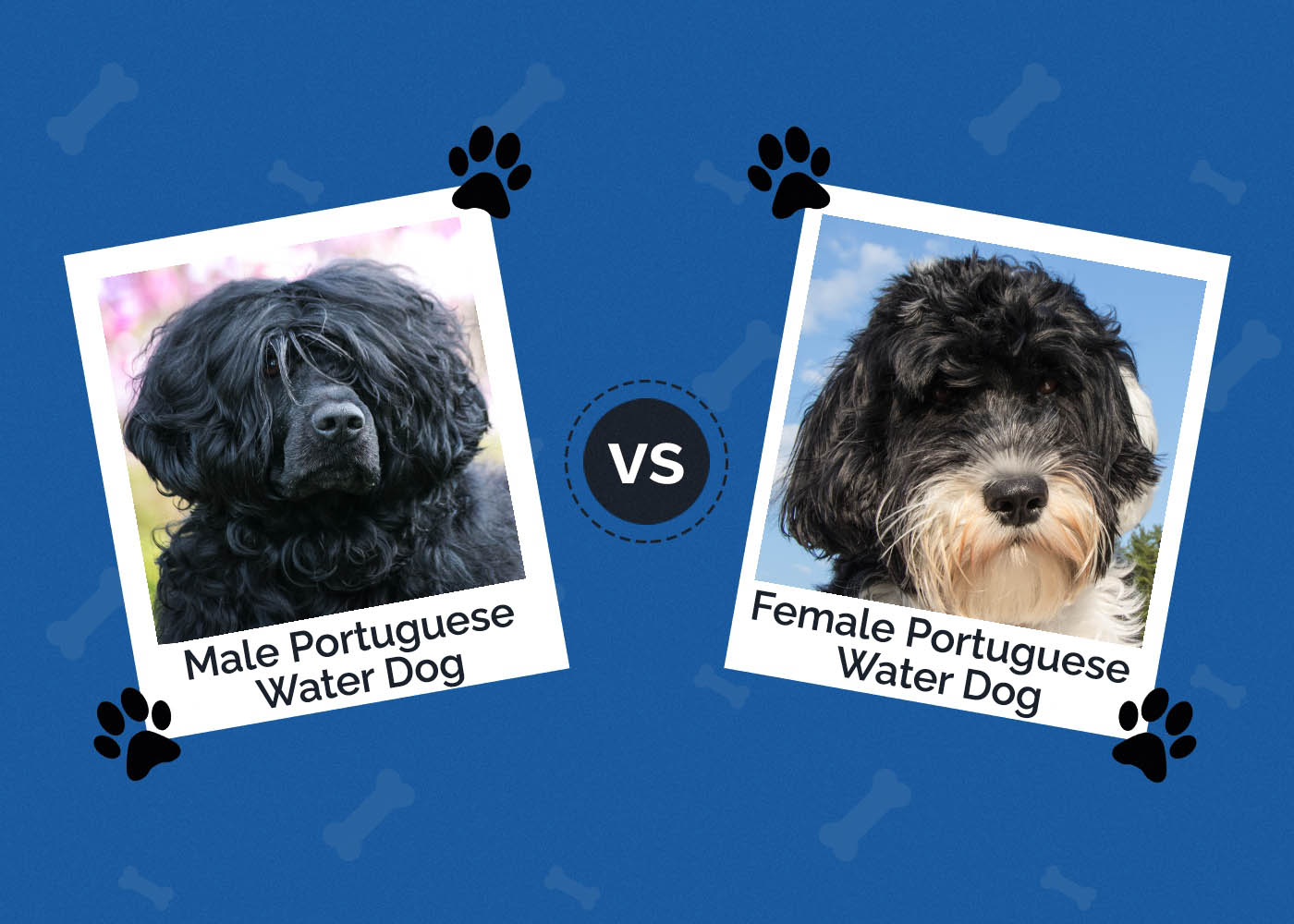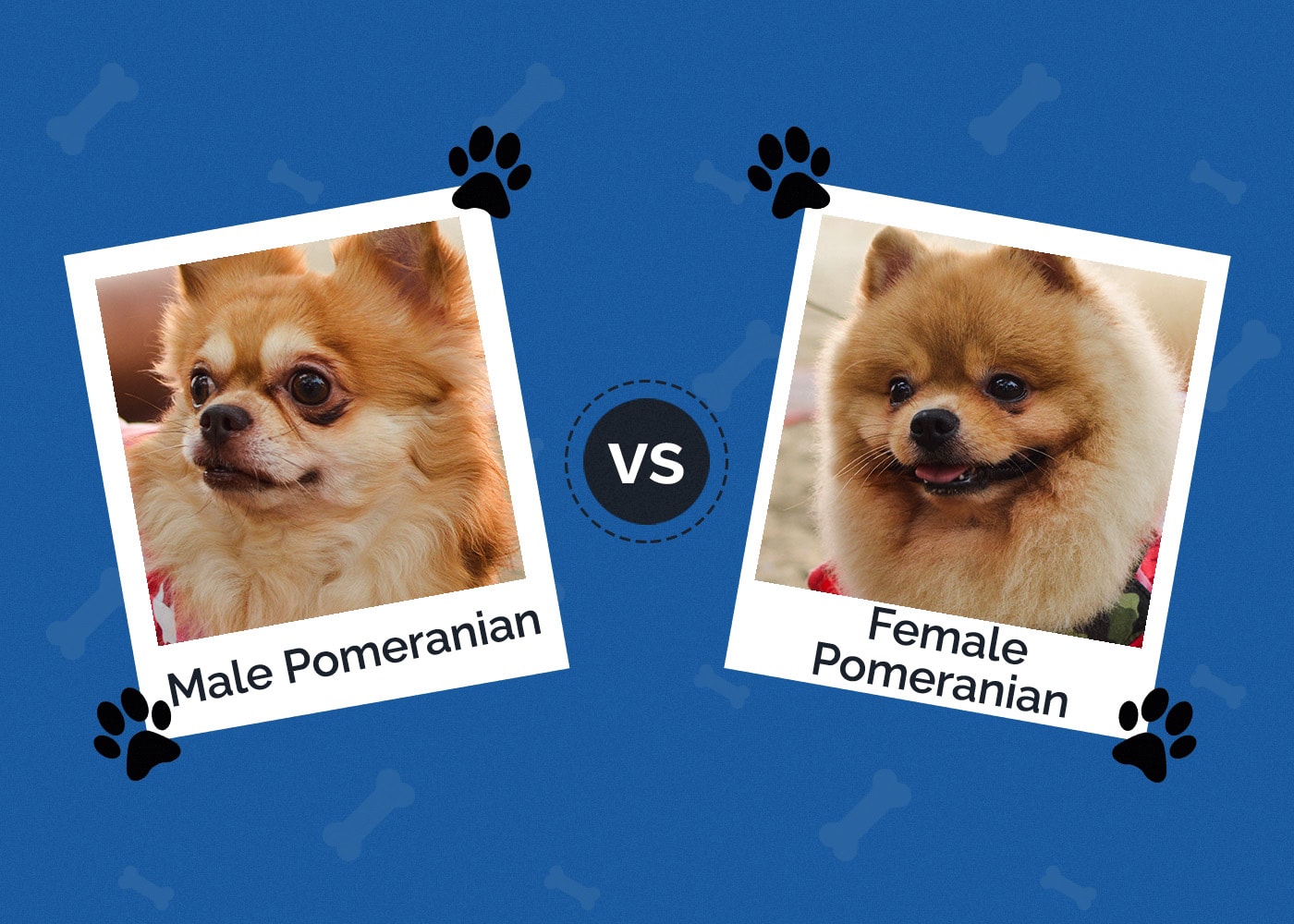How to Deal With Sibling Rivalry in Dogs: 7 Expert Tips
Updated on
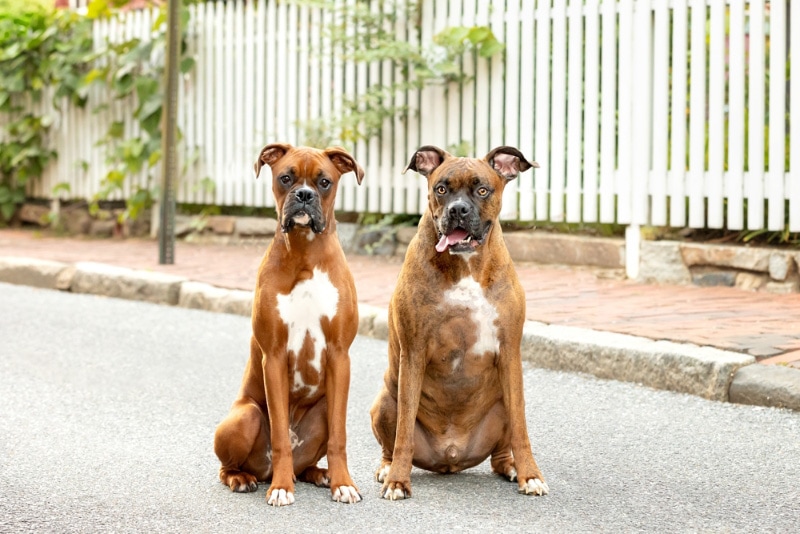
Seeing your dogs fight with each other can be distressing, leaving you wondering what to do and how to rectify the situation. Not all sibling dogs get along, and many factors can lead to aggression. One question always at the forefront is: should I intervene or let it play out? Typically, it’s not recommended to intervene because that can only worsen the problem. So, what can you do? Often, it’s best to let the situation play out, but only if no serious damage is being done.
Join us in learning more about sibling rivalry, along with seven tips on how to remedy the situation of sibling rivalry in dogs.
What Causes Sibling Rivalry Between Dogs?
Sibling rivalry can take place between two dogs unrelated living within the household or even among two dogs from the same litter that are living together in the same home. Aggression issues can occur between a dog with a dominant personality and a subordinate dog that involves territorial dominance or even fear and anxiety.
Sometimes, sibling rivalry in dogs only occurs when the owner(s) are home and typically does not occur when they are not. This can mean that one dog is competing for more attention from the owner and struggles when the other dog is near and receiving affection at the same time.
Other causes could involve grouchiness from an aging pet, the social maturity of a pup (generally occurs around 3 years of age), or the loss of a canine or family member. Regardless of the reasons, it’s important to know tips on how to deal with the situation before it evolves into a dangerous situation. Check out the seven tips below for help.

The 7 Tips for Dealing With Sibling Rivalry in Dogs
1. Intervene if Blood Is Drawn
As harsh as it may sound, you should only intervene if the fighting is dangerous and blood is drawn. In this case, the situation could become dire and even fatal, and you’ll need to take action to separate the dogs. However, it’s crucial you intervene safely to keep from getting seriously hurt or bitten. Never underestimate your dogs. In the heat of the moment, a dog will bite its owner. The best scenario is to pull the dogs apart with leashes, but usually, two siblings will not have leashes on while inside the home.
If no leashes are present, do not stick your hand between the two dogs or grab their collars. Rather, remain calm and do not raise your voice. Clear the area of children and other people. Next, make noise with pots and pans, a whistle, or whatever you have handy. If that doesn’t work, throw a towel over the two, as this may stop the action enough to pull them apart safely. If nothing else works, use a safe object to wedge between the two, such as a laundry basket, a baby gate, or some other safe object that will not hurt the dogs.
2. Let the Dogs Establish a Hierarchy
For humans, sibling rivalry is generally dealt with by the parents explaining to the dominant child that they need to play fairly with their sibling, but in the canine world, it doesn’t work that way. In fact, if you insist on the confident, dominant dog to play fairly with the subordinate dog, you’re interfering with a possible healthy canine relationship. It’s the consensus that a subordinate dog does not mind when the assertive dog takes toys or simply bosses the dog around.
In short, refrain from coming to the aid of the subordinate dog against the more assertive dog unless the fight escalates to potential injury, as mentioned above.

3. Remove All Toys From Common Areas
It’s important not to give the assertive dog something to be jealous of. If there are no chew toys, balls, or any other type of toy in common areas that both dogs frequent, then the dominant dog will not be tempted to show aggression. Having toys around in common areas may trigger aggressive behavior.
4. Implement a “Nothing in Life Is Free” Program
So, what the heck do we mean by “nothing in life is free” program? Simply put, this means showing both dogs that treats, food, toys, and even affection from you must be earned. This way, the competition is diminished and may even stop the behavior. So, how do you accomplish this? It starts with teaching simple commands, such as “sit,” “come,” and “stay.”
Obedience training is critical in teaching a dog how to be well-behaved, and teaching these commands can help. In other words, don’t let yourself become a possession your dogs will fight over. If you dish out affection without making the dogs earn it, possessiveness can occur.
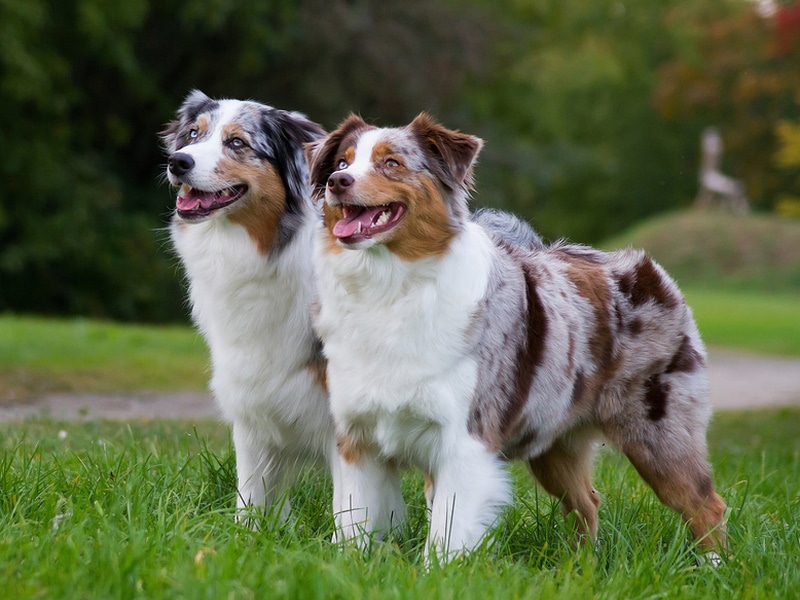
5. Show Preference
Some dogs simply do not handle competitiveness very well. In other words, when you add another dog into the mix, the dog that was there first may feel threatened. In this case, it’s detrimental to show the first dog that they are still number one. In other words, give this dog first access to everything; for example, put their harness and leash on first, provide them with a treat first, feed them first, etc. Giving one dog priority helps establish structure, which can help ease aggressive tendencies.
6. Feed Them Separately
Food is a common trigger for aggression. Try feeding your dogs separately for a while to eliminate food jealousy triggers. Eventually, try feeding them in the same room but using obedience. For example, use verbal commands and control the feeding time. Don’t allow your dogs to go to the bowl until they hear the command from you. If the dominant dog finishes before the subordinate one, do not let them go over to the subordinate’s bowl. If they try to, redirect them over to their own bowl.

7. Contact Your Veterinarian
If you’re still having trouble or getting nowhere with the situation, call your vet. Your vet may prescribe anxiety medications to help ease aggression. Your vet can also check your dog for hidden illnesses or pain you’re not aware of that can be causing aggressive behavior. Your vet may also provide even more useful tips on remedying the situation.
What Else Can You Do to Remedy the Behavior?
One thing to remember is that intact dogs, regardless of sex, may show aggression due to hormones. Having your dog spayed/neutered is one way to ease aggression tendencies. Not only will it help with aggression, but it can also extend your dog’s life by eliminating possible cancer risks, such as ovarian or testicular cancer. However, fixing your dog may not stop aggressive behavior, so don’t let your guard down.
Training your dogs is also essential in easing aggression. You, the owner, should always have complete control over your dogs, and you should establish dominance in the pack. If a dog feels they can run all over you, they will, which can lead to unwanted behaviors, such as aggression.

Final Thoughts
Dealing with sibling rivalry in dogs can be frustrating, but thankfully, there are ways you can help stop the behavior to restore peace within the home. In drastic cases, one dog may need to be removed from the home, but the goal is to prevent such a drastic event from happening. We hope that by following the tips above, you can remedy the situation, and if all else fails, consult your veterinarian for help.
Featured Image Credit: Danielle W Press, Shutterstock

